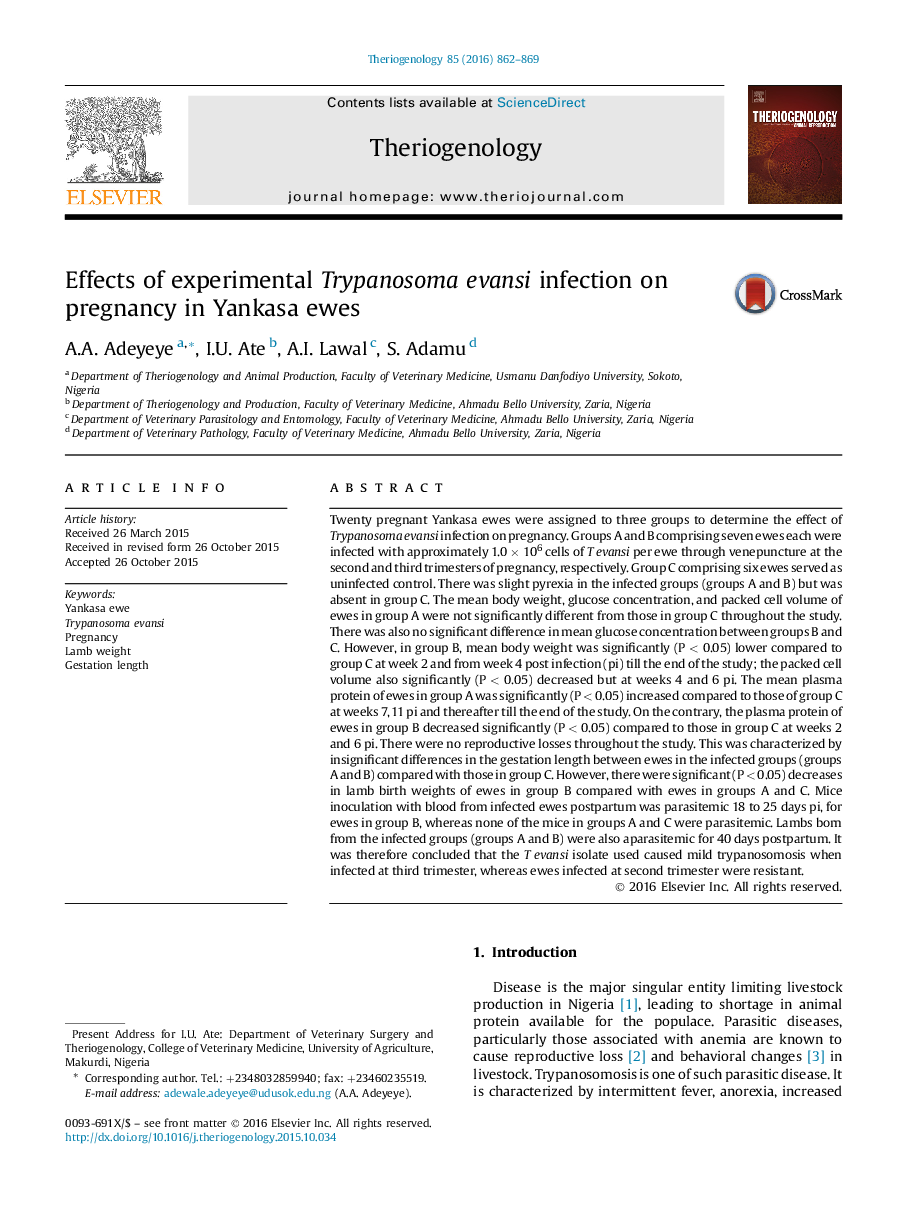| Article ID | Journal | Published Year | Pages | File Type |
|---|---|---|---|---|
| 2094901 | Theriogenology | 2016 | 8 Pages |
Abstract
Twenty pregnant Yankasa ewes were assigned to three groups to determine the effect of Trypanosoma evansi infection on pregnancy. Groups A and B comprising seven ewes each were infected with approximately 1.0Â ÃÂ 106 cells of T evansi per ewe through venepuncture at the second and third trimesters of pregnancy, respectively. Group C comprising six ewes served as uninfected control. There was slight pyrexia in the infected groups (groups A and B) but was absent in group C. The mean body weight, glucose concentration, and packed cell volume of ewes in group A were not significantly different from those in group C throughout the study. There was also no significant difference in mean glucose concentration between groups B and C. However, in group B, mean body weight was significantly (PÂ <Â 0.05) lower compared to group C at week 2 and from week 4 post infection (pi) till the end of the study; the packed cell volume also significantly (PÂ <Â 0.05) decreased but at weeks 4 and 6 pi. The mean plasma protein of ewes in group A was significantly (PÂ <Â 0.05) increased compared to those of group C at weeks 7, 11 pi and thereafter till the end of the study. On the contrary, the plasma protein of ewes in group B decreased significantly (PÂ <Â 0.05) compared to those in group C at weeks 2 and 6 pi. There were no reproductive losses throughout the study. This was characterized by insignificant differences in the gestation length between ewes in the infected groups (groups A and B) compared with those in group C. However, there were significant (PÂ <Â 0.05) decreases in lamb birth weights of ewes in group B compared with ewes in groups A and C. Mice inoculation with blood from infected ewes postpartum was parasitemic 18 to 25Â days pi, for ewes in group B, whereas none of the mice in groups A and C were parasitemic. Lambs born from the infected groups (groups A and B) were also aparasitemic for 40Â days postpartum. It was therefore concluded that the T evansi isolate used caused mild trypanosomosis when infected at third trimester, whereas ewes infected at second trimester were resistant.
Related Topics
Life Sciences
Agricultural and Biological Sciences
Animal Science and Zoology
Authors
A.A. Adeyeye, I.U. Ate, A.I. Lawal, S. Adamu,
